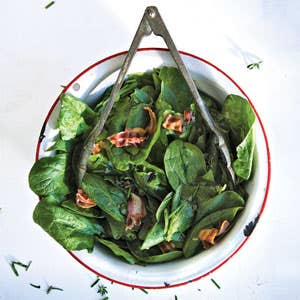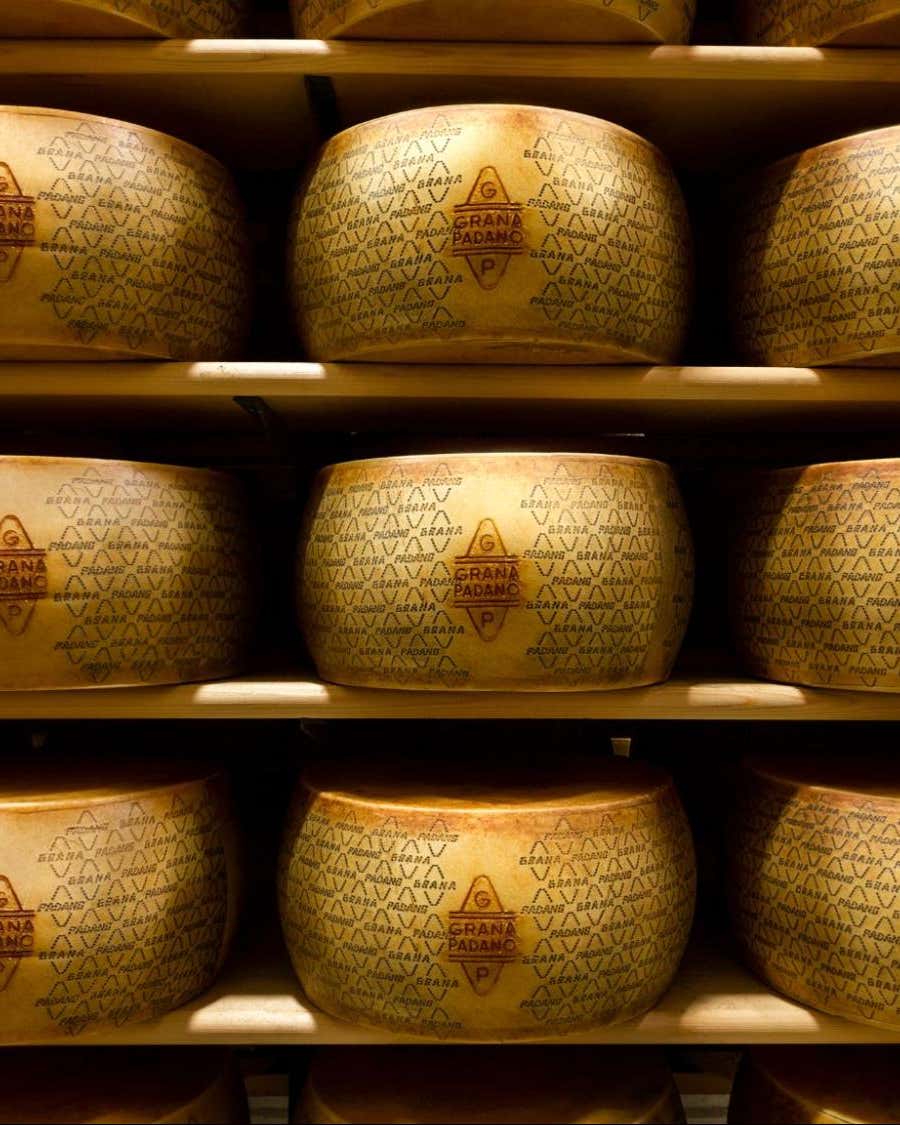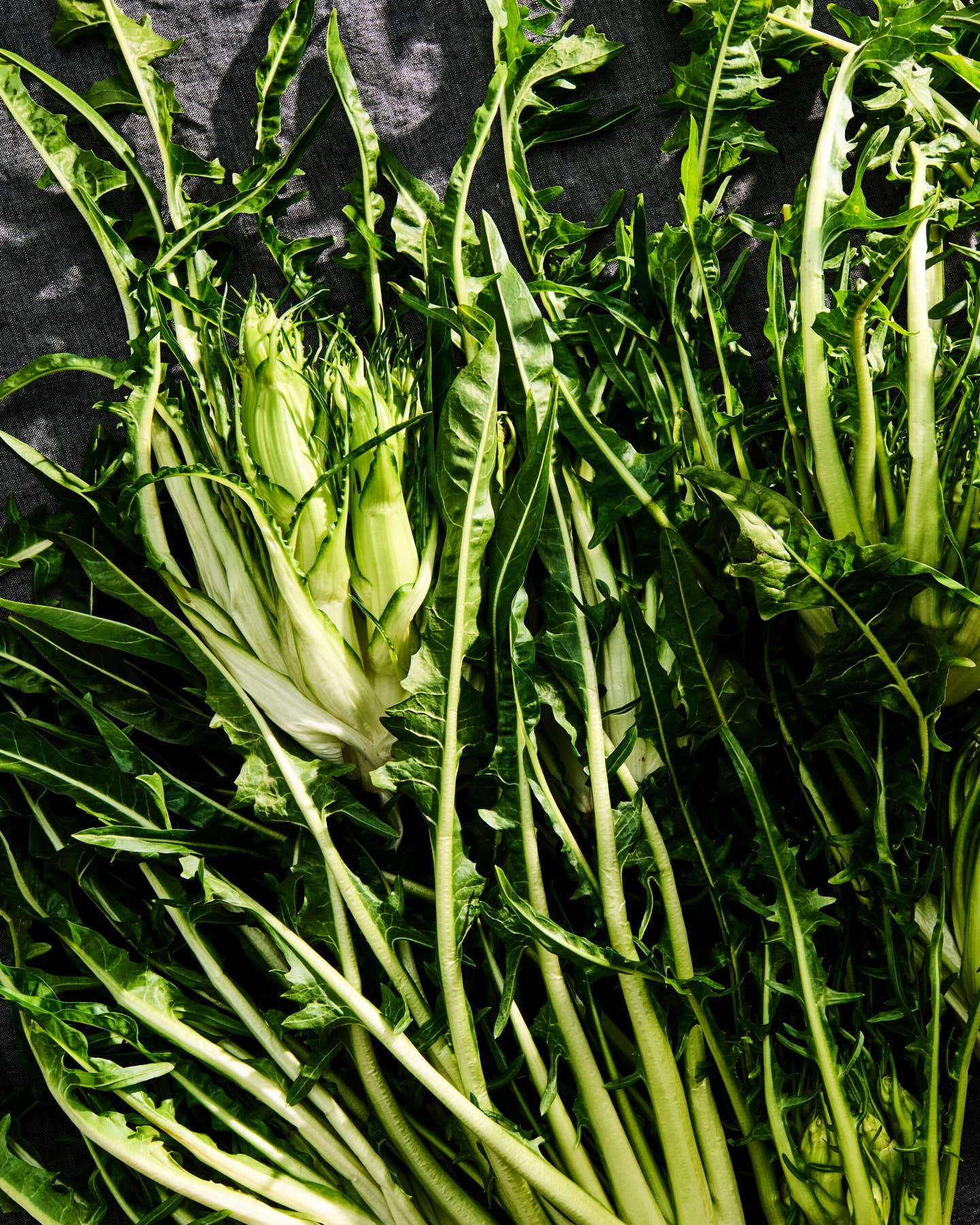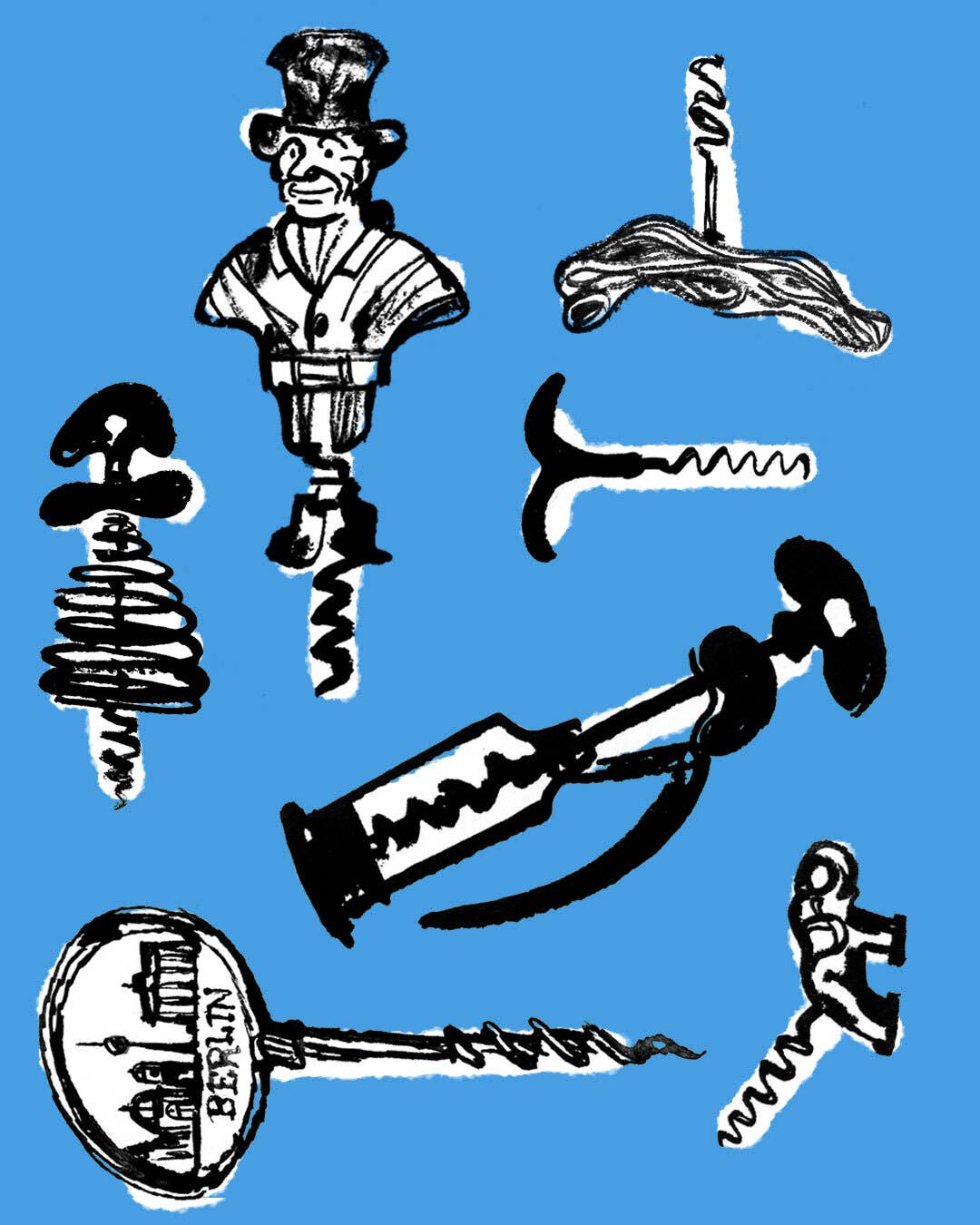
Editor's note: This essay has been nominated for a 2008 James Beard Award for magazine feature writing. To visit Barbara Kafka's blog, click here.
I love salad. When other people are eating a sandwich or pasta, I am eating salad. Give me a warm day—even not so warm—and salad is my meal. I love it any time of year but especially when the garden behind my home beckons with rows of tender, flavorful baby lettuces, from copper-colored ones to the palest greens. I dress them ever so lightly and sometimes top them with a flourish of herbs. In the late summer and fall, I like heartier salads of escarole and curly endive. In the winter, I put my gastronomic credentials on the line by embracing iceberg lettuce, clean tasting and eternally crisp.
Apple pie deserves its due, but in truth it is salad that has represented, perhaps more definitively than any other food, American attitudes toward eating and cooking. The salads that have come into and, in some cases, gone out of vogue over the years are telling reflections of American tastes at a given moment in time, from mid-20th-century curiosities like marshmallow salad and poinsettia salad (the latter being a ball of cream cheese topped with French dressing and served over pineapple slices and canned pimiento) to perennially satisfying national classics like the caesar and the cobb to contemporary favorites like the tri-colore, a mixture of red, green, and white lettuces like arugula, radicchio, and belgian endive. Salad tells us about the roles of women in this country—who went from being farm wives to being busy professionals—and about how much our eating habits, from the order of courses to our obsession with dieting, have changed over the decades. Salad tells the story of food in America. It is who we are.
Although salad as we know it now seems to be an inevitable part of the American meal, it hasn't always been so. The practice of assembling fresh greens (for a glossary of popular greens, see A Guide To Greens and vegetables or, sometimes, fruit, cooked meats, eggs, or shellfish on a plate and adding dressing evolved over time, responding to changing tastes and—just as important—to the influence of other countries' cuisines. First and foremost, I give bows to the French, whose cooking continues to inform ours and who have traditionally served, in bistros and other informal restaurants, a small lettuce salad, often in a glass bowl, after the main course.
The simple salade verte, that progenitor of countless other green salads, is most often made with soft, mild lettuces such as boston or butter lettuce, and dressed with a vinaigrette, often with mustard added as an emulsifier. It was presumably an affection for this de rigueur end-of-meal salad that caused my French friends, after their tours of America in the '60s, to throw up their hands in horror and exclaim, "Can you believe it? They serve the salad before the meal!" At the time, I didn't have the heart to point out to them that not only do we serve salads prior to the main course but sometimes they are the main course.
My friends' indignation notwithstanding, it wasn't long before the French themselves were occasionally serving a substantial first-course salad, usually a salade gastronomique, of haricots verts, foie gras, and crayfish or the like. Indeed, in the south of France, a tradition of more-filling salads already existed—witness the salade niçoise, that sturdy combination of tuna, potatoes, and yet more haricots verts.
On the other shore of the Mediterranean and across the Middle East, a rich tradition of salads and saladlike dishes has long been in place and, in recent decades, has heavily influenced American menus. Accompaniments to a meal in many Mediterranean countries include dishes like tabbouleh (bulgur wheat with lemon and parsley) and tsatsiki, a cooling mixture of cucumbers and yogurt. Similarly, we have come to embrace a wealth of Asian salads, like those of Thailand composed of grilled beef or shrimp and dressed with lime juice and fish sauce, as well as those of Latin American countries, which encompass everything from fresh fruit to cactus, beans, and corn.
Still, when looking at the broader history of American salad, it's useful to circle back to Europe—to the French (of course), to the Germans (think of potato salad), and, perhaps most significantly, to the English. The first English book on the subject of salads was Acetaria: A Discourse of Sallets by John Evelyn, published in 1699. It is remarkably comprehensive, covering a wide variety of edible plants, and also prescient of trends to come centuries later, in that it lists the health-giving properties of various greens. The idea that raw vegetables and greens could be good for people had often been met with suspicion, in England and elsewhere, and boiling them was frequently the most popular means of preparation because it was thought that in their uncooked form they were hard to digest.
Salad making in America dates to the early days of European settlement. Thomas Jefferson, one of our most serious gardeners, left us his own catalogue of early salad ingredients in his Garden Book, a lovingly detailed horticultural diary that documented the founding father's investigations in gardening from 1766 to 1824; it was compiled and published by Edwin Morris Betts in 1944. Lettuce first appears in a 1767 entry. By 1774, Jefferson was planting radicchio di pistoia and wild endive. In 1813 he gave an extensive list of salad greens and lettuces. A few years later, in 1824, in The Virginia House-wife, Mary Randolph describes a simple salad made from greens taken from the garden.
By the late 19th century, as salads became ever more popular, restaurants began to include them on menus in numbers and presentations—many of them European in origin—previously unimagined. In The Epicurean, a cookbook published in 1894, Charles Randhofer, the chef at New York's Delmonico restaurant, lists more than 60 kinds of salad, divided into categories that include green salads, cooked-vegetable salads, raw-vegetable salads, and cooked salads, among which are many with seafood or meat, precursors to the chicken, egg, and tuna salads still beloved today.
The years around the turn of the century witnessed a fascination with progress in the domestic sphere in America. For one thing, the introduction in the late 19th century of the cast-iron stove—in my view one of the earliest and greatest facilitators of women's liberation—replaced the grueling and time-consuming job of open-hearth cooking, granting women the freedom to experiment with more-nuanced cuisine. The serving of salads eventually became a sign of refined tastes, favored by the upper and upper-middle classes.
As the middle decades of the 20th century approached, the increasing availability of canned, jarred, and frozen foods gave rise to lively and sometimes weird concoctions. Molded salads, popular since the introduction of powdered gelatin in the late 19th century, took on all sorts of new guises (one of my favorites is a well-seasoned—often with celery salt—tomato ring filled with seafood or even chopped hard-cooked egg). Some ingredients became, for a time, a salad maker's best friend: decent mayonnaise, chili sauce (of the mild and nonthreatening variety), roasted peppers, anchovy paste, and corn niblets were just a few of the items readily available for enlivening a salad. Some of these ingredients—canned chickpeas, for example, and kidney beans—are still popular salad staples today. Others, like canned string beans, have largely fallen out of favor.
Canned fruit, in particular, spawned some of the oddest dishes. A 1941 church fund-raising cookbook from Ridgewood, New Jersey, gives a recipe for "Delicious Salad", containing a can each of pineapple and sweet cherries along with sliced oranges, marshmallows, and a cooked dressing of eggs, vinegar, and sugar with beaten cream folded in at the end. In case there might be confusion that this could be construed as a dessert, the recipe suggests serving it atop crisp lettuce. In my childhood, I was on more than one happy occasion offered canned peaches stuffed with cream cheese and napped with vinaigrette.
When it came to dressings during the early and mid-20th century, what we now consider basic materials, such as olive oil and good-quality vinegars, were virtually unknown in most American kitchens. (In many parts of the country, olive oil could be purchased only in minuscule amounts at pharmacies, where it was—and indeed occasionally still is—sold as a laxative and skin ointment.) Thus were born our seemingly numberless types of dressing, many, such as thousand island, based on ingredients near and dear to our hearts (and our refrigerators), like mayonnaise and pickles (see All Dressed Up for a closer look at a few of our favorite dressings).
High-end restaurants, country clubs, and hotels sometimes had access to a greater selection of ingredients during these years. They also employed chefs with classical training who had an idea of what could acceptably be combined. Their customers tended to fare better than people at home, who depended on the popular cookbooks of the time. Some of the brightest creations of the era were main-course luncheon salads, designed to appeal to ladies: the chef's salad (lettuce, ham, beef tongue, turkey or chicken, and hard-cooked egg) served at the Ritz-Carlton Hotel in New York City, the mixed-greens salad with green goddess dressing at San Francisco's Palace Hotel, and the cobb salad (lettuce, tomatoes, bacon, chicken, hard-cooked egg, avocado, and roquefort) at the Brown Derby in Los Angeles were all lasting successes.
The grand experiment continues. In recent years, the choice of salads, as both first and main courses, and the list of ingredients have grown exponentially, taking cues from around the world. As the foods at our disposal become more varied and diverse, salad, by its very nature, becomes the ideal playground for new ideas. The salads we eat today reflect more vibrantly, and more faithfully, than ever before the many immigrant cultures that thrive within our borders and also our burgeoning appreciation of small farmers and locally sourced products.
Whereas just a decade or two ago supermarket produce aisles offered a virtually unchanging cast of bare basics, today's food stores and farm stands are bursting with unprecedented variety. Even familiar salad vegetables now appear in numerous incarnations—heirloom tomatoes of every size and color, purple carrots, cucumbers both great and small. We have red onions, white onions, yellow onions, vidalia onions, walla walla sweet onions, not to mention spring onions, scallions, shallots, and a whole range of chives. Garlic, once considered too aggressive for a gentleperson's table, is now ubiquitous in our salads. The selection of greens one can buy today is also staggering: formerly obscure finds, including such chicories as radicchio, chioggia, and the long, serrated puntarelle of winter, are no longer uncommon. Many kinds of cress and fresh herbs can now easily be bought year-round. And almost any market sells bags of washed mixed greens under the name mesclun. Contributing to this diverse tableau are once exotic vegetables like bean sprouts and mizuna and tatsoi (a cousin to bok choy) greens.
Americans are exhibiting the same, voracious curiosity when it comes to what they put on their salads. The array of oils and vinegars at specialty stores today is nearly overwhelming. High-quality first-pressing extra- virgin olive oil, from all over the world, is a given, and the vinegars on offer are made from an astounding diversity of fruits, wines, and even grains. Many of us are dispensing altogether with crystallized salt for boosting our salads in favor of using soy sauce. Indeed, the introduction of that and other Asian condiments such as mirin, sesame oil, rice wine vinegar, and ginger has vastly enhanced the everyday salads of countless home cooks and restaurateurs—a reflection, perhaps, of the gifts that America's Asian immigrants have bestowed on our everyday larder.
And yet, many of the hearty favorites of a simpler time are still with us: hard-cooked eggs, potatoes, corn, shrimp, chicken, turkey, ham, celery, canned tuna, and good old cabbage and romaine. As new gets added to old, there would seem to be no limit to the capacity of our cupboards, refrigerators, and gardens. American salad, it seems, makes room for all comers while remaining, in some elemental way, our own.
Keep Reading
Continue to Next Story










